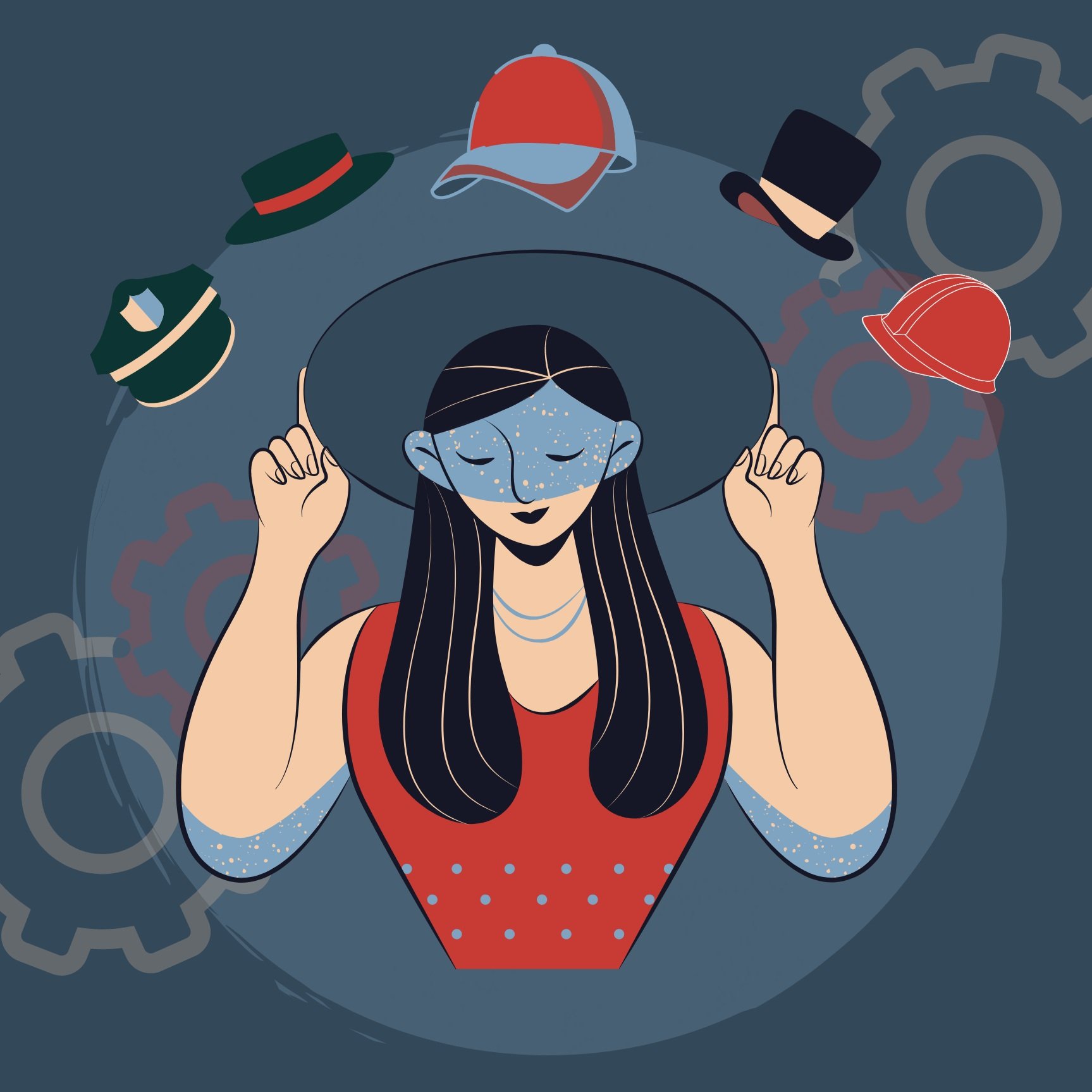How to Wear Multiple Hats . . . and Not Lose Yourself In the Process
By Brianna Caza, Heather Vough, & Sherry Moss
January 28, 2022
As the gig economy continues to boom, many workers are finding themselves wearing multiple work hats, whether it's engaging in a side hustle in addition to their full-time job or pursuing multiple types of work simultaneously. In fact, one survey estimated that 54% of Americans report having a side hustle. The COVID-19 pandemic has further fueled interest in multiple job-holding by forcing entire industries to change and allowing millions to experiment with working remotely. While working multiple jobs offers some financial stability, our research which followed 48 individual multiple job holders over a five-year period suggests that it can be logistically, psychologically, and socially challenging. The thing they struggled with the most was the threat they felt to their authenticity. The multiple jobholders we spoke with diversified their occupational pursuits in order to express more of themselves, yet the process juggle multiple work commitments led them to fear they were losing their sense of self. They wondered: who am I if I’m all these things at once? How do I develop a sense of coherence when I am being pulled (or have pushed myself) into so many different directions? As we followed them over five years, we learned how many multiple jobholders developed a sense of authenticity while juggling their multiple jobs, thriving in this seemingly unusual job structure. If you feel yourself being pulled in many directions, our extensive research suggests that you can feel more authentic when you:
1) Develop practices and routines that protect each of your work pursuits. Early on, it was essential for our multiple jobholders to segment their time and focus to concentrate on each of their jobs individually. They did this by portioning their time and relegating particular jobs to certain places. Doing so helped them to establish legitimacy within each of their jobs separately. Thus, when starting to have multiple jobs make sure to make time for each job individually and set boundaries around them.
2) Learn to accept all of yourself, especially the paradoxes. Our participants expressed that sometimes they felt as though they had to sacrifice some parts of themselves and in particular their vocational interests, in order to become an expert or a master in another domain. This may be because certain characteristics or work roles seem paradoxical or even antithetical to others. But, over time as they came to interrogate and build a clearer understanding of why they were drawn to each of their jobs, many reported that their seemingly divergent work roles are actually perfectly shaped puzzle pieces that defined their true multi-faceted nature. This teaches us that while it may take a while to fully understand the complementary nature of your work roles, the synergy you gain from doing so pays off in dividends.
3) Give yourself permission to only selectively share pieces of yourself. The multiple jobholders we interviewed also expressed that the societal expectation for total authenticity sometimes led them to feel pressured to present their “whole selves” to everyone. However, along the way they learned that sometimes people are not fully ready to see the “whole” you, especially when it can be considered counternormative (like holding more than one job!). One of our participants explained that this time or context dependent sharing still allows her to be her authentic self because all of the work roles she inhabits are slices of who she is and so connecting to people from within the boundaries of a single role at one point in time is an expression of her true self. Accordingly, you may need to tailor how you talk about your work for different audiences, depending upon their readiness to accept multiple job holding.
A connection to routines: Successful independent workers find that, as one writer commented, “routines are the wardens of accomplishment.” They use routines to get into their workday and to transition out of it at the end of the day. Routines help them either getting the right headspace or simply get to work altogether. Routines bring focus and get them a way to get back to work when they lose a sense of where they were going.
Studying these multiple jobholders taught us that being authentic does not mean being the same across time and context. Humans are, by nature, many things, and even though it is logistically, psychologically, and socially demanding, working multiple jobs may bring us closer to understanding and expressing our true selves.

